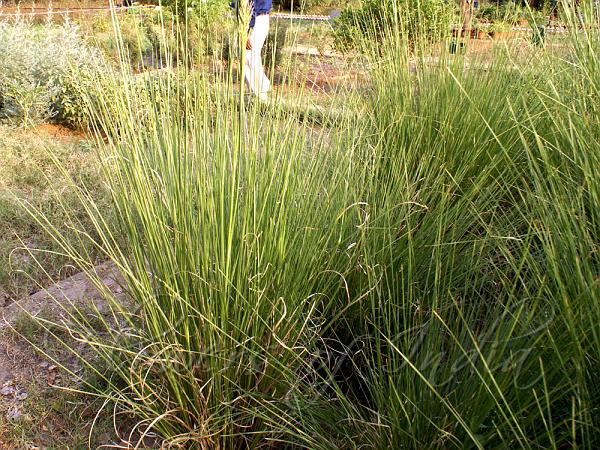|
| Khas |
|

|

| File size | 523091 |
| Original date | 5/8/11 5:35 PM |
| Resolution | 1000 x 750 |
| Flash | Flash did not fire, auto |
| Focal length | 20.0mm |
| Exposure time | 1/80s |
| Aperture | 5.6 |
| Focus Distance | |
| Metering Mode | Multi-segment |
| Camera make | SONY |
| Camera model | DSLR-A100 |
| Sensor type |
|
|
|
|
Photo: |
Botanical name: Chrysopogon zizanioides Family: Poaceae (Grass family)
Synonyms: Vetiveria zizanioides, Vetiveria odorata
Synonyms: Vetiveria zizanioides, Vetiveria odorata
Khas is a perennial bunchgrass, and grows to 1.5 m
tall and form clumps as wide. The stems are tall and the leaves are
long, thin, and rather rigid. The flowers are brownish-purple. Unlike
most grasses, which form horizontally spreading, mat-like root systems,
vetiver's roots grow downward, 2 m to 4 m in depth. The vetiver bunch
grass has a gregarious habit and grows in clusters. Shoots growing from
the underground crown make the plant frost and wildfire resistant, and
allow it to survive heavy grazing pressure. The leaves can become up to
3 m long and 8 mm wide. The panicles are 15 cm to 30 cm long and have
whorled, 2.5-5 cm long branches. The spikelets are in pairs, and there
are three stamens. The plant stems are erect and stiff. They can
survive deep water flow. Under clear water, the plant can survive up to
two months. The leaves of vetiver are a useful byproduct to feed
cattle, goats, sheep and horses. Khus is also used as a flavoring
agent, usually as khus syrup. In the Indian Subcontinent, khus (vetiver
roots) is often used to replace the straw or wood shaving pads in
evaporative coolers.
| Identification credit: Gurcharan Singh | Photographed in Herbal Garden, Delhi & Bijnor, UP. |
• Is this flower misidentified? If yes,